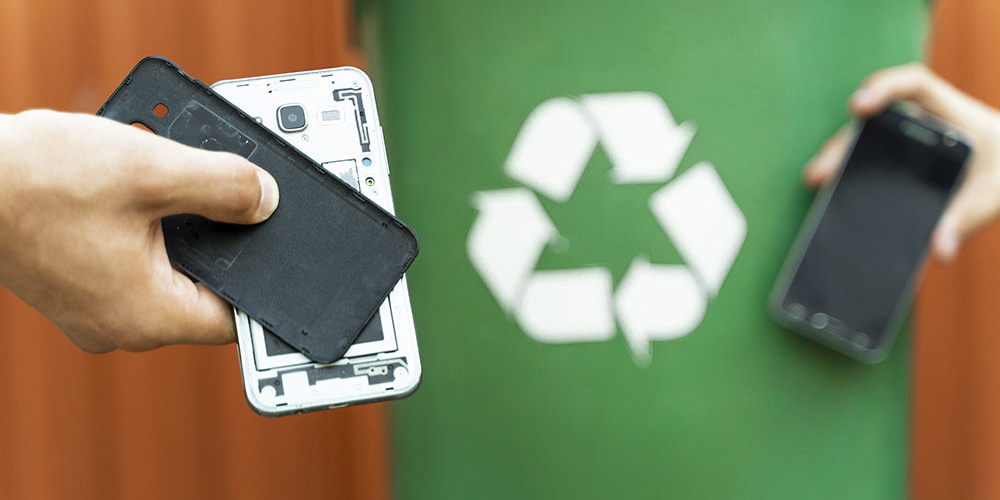Almost all the materials used for electrification are finite. Waste recycling should play a major role in the transition to a decarbonised economy.
Recovering critical and valuable materials from waste has a vital role to play in electrifying the world as we transition towards renewable energy and decarbonisation.
However, many of the commodities and critical materials needed for this electrification are subject to record prices. And many are simply dug up from the ground, while at the same time we are landfilling waste.
With growth in electric vehicles, wind turbines, and domestic solar systems, and an uptick in demand for batteries – including for electronics such as phones and computers – it is often overlooked that almost all of the materials needed to electrify our world are finite.
This is where waste recycling in Australia can play a major role, and rightly our nation has various strategies and policies addressing this critical issue.
The potential of waste
New research by the UNSW Sustainable Materials Research and Technology (SMaRT) Centre (published in leading international journals) demonstrates that we can reform materials embedded in various waste batteries, such as cobalt and nickel.
Often this waste is exported and the value derived from the extraction and recovery of the embedded materials is lost to Australia.
We need a change of mindset that values our materials and challenges our throw-away mentality.
Technologies developed, and being developed, by the SMaRT Centre can also recycle and reform many of the materials from electronic waste that contain copper, manganese, zinc, gold and various rare earth elements.
And in a new announcement, the Centre’s research shows that waste coffee grounds and hydrogen derived from other wastes can be used as part of its Green Steel® Polymer Injection Technology.
Wastes from plastic, coffee grounds and rubber tyres are now used as alternative sources of coke and coal for steelmaking.
These methods of introducing hydrogen to the manufacturing process for steel demonstrate vast improvements in efficiency and the amount of energy required.
This means that waste itself can, and should, be seen as a resource if we want to electrify the world and boost sustainability in our economy.
(Re)cycling up
Using “microrecycling”-based techniques to turn waste into value-added materials means we can also accelerate our sovereign manufacturing capability: more important than ever in our COVID-affected and supply chain-constrained world.
For instance, in the past five years, the volume of discarded smartphones, laptops, printers and many other electronic devices reaching their end of life jumped by 21 per cent.
This e-waste reached a record 53.6 million metric tonnes in 2019, an average of 7.3 kilograms per person, and has become the fastest-growing domestic waste stream. Global e-waste will reach a staggering 74 million metric tonnes by 2030, with most ending up in landfill, stockpiles or incinerated.
Yet recycling is not keeping pace with the global growth of e-waste – just 17.4 per cent of e-waste in 2019 was collected and recycled. Incredibly, this means the amount of e-waste could easily become equal to or bigger than plastics.
The European Electronics Recyclers Association states that 60-95 per cent of e-waste can be recycled. According to the UN, the value of raw materials in the e-waste generated in 2019 was about $57 billion USD, yet just $10 billion was recovered through recycling. What’s more, electric vehicle sales rose 40 per cent to 3.1 million units in 2020 and are predicted to grow to 30-40 million units by 2030.
Yet across the world there is a growing willingness within communities to embrace the many and considerable issues we face in the management of our materials sustainability, not just in cleaner energy.
The right value for our waste
We need a change of mindset that values our materials and challenges our throw-away mentality.
New government policies pleasingly include rare earths (such as neodymium found in computer hard drives) as a national priority. A renewed focus across all levels of government to better manage our waste, recycling and manufacturing resources is also welcome.
Even the International Energy Agency, in its recently released “Net Zero by 2050” report, is calling for more advanced recycling capability, noting that 40 per cent of emissions saving in 2030 will come from improvements in materials efficiency and increased recycling by business.
Recycling not only brings obvious benefits to society, but delivers reduced energy needs and environmental impacts by overcoming the energy-intensive extraction and processing required of natural resources.
The Federal Government’s National Waste Report 2020 shows that Australia’s national waste has increased to 74 million tonnes a year. Of that, about 60 per cent is estimated to be recycled. This is below the national resource recovery target of 80 per cent by 2030, which was set in the 2019 National Waste Policy Action Plan. Moreover, Australia’s new waste export bans coming into effect from this year are expected to reduce the rate of recycling.
Infrastructure Australia recently found that constraints on the collection and processing of recyclable waste, including product design and low demand, have led to recyclable waste ending up in landfill.
That report highlights the urgent need for new waste and recycling infrastructure, and has listed as the highest priority the need for the nation to retool itself in this area.
That is why I see a huge opportunity to adopt and create new technologies that lead to new supply chains and jobs to address these challenges.
As director of the Australian Research Council (ARC) Microrecycling Research Hub, I am focused on helping our nation achieve this. And as the leader of the national Sustainable Communities and Waste Hub, I’m aiming to help communities better manage their waste and other challenges around sustainability.
My vision is for Australia to have decentralised and modernised manufacturing and recycling sectors, with both working closely together in sync. This will help us give greater value to our materials while striving for better material sustainability.
Enabling onshore, sophisticated waste processing, recycling and the reforming of waste as a resource will be central to global electrification and Australia’s ongoing prosperity.





